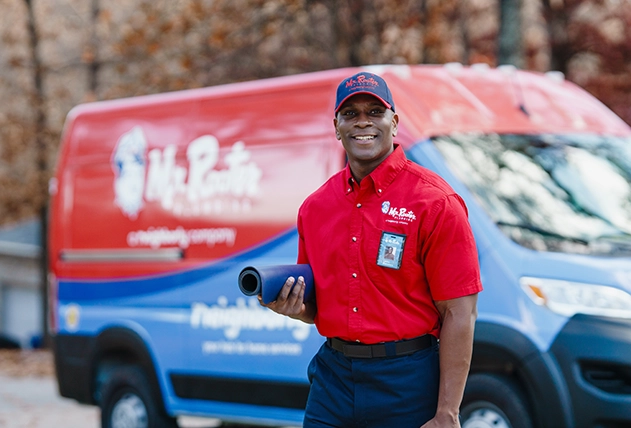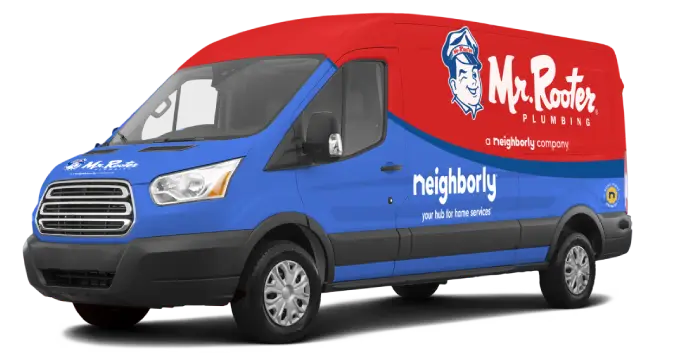Plumbing issues often emerge at the most inconvenient times. A sudden leak can lead to water damage and costly repairs that may strain your budget and disrupt your peace of mind. Understanding your home's plumbing system is crucial, yet many homeowners feel unprepared to tackle these challenges. The fear of making mistakes can hold them back from taking necessary action.
Addressing essential home plumbing requirements can prevent issues and save you money. This guide will walk you through the basics of plumbing and keeping your water system running smoothly.
Key Takeaways
|
Understanding Your Home’s Plumbing
Your plumbing system controls how water is brought in, used and sent out of your home. Here are the main components and how they work together.
The Main Water Supply Line
Every plumbing system starts with a source, and for most homes, that is the main water supply line. This line is how water enters your home and is connected to a municipal water supply or a private well. From this supply, water branches out to various rooms and fixtures. The supply line's critical feature is the shut-off valve. It controls water flow and lets you turn off the water if there is a leak or emergency.
To locate your main water supply, start in your basement or crawl space. Look for a pipe coming through an exterior wall close to the ground. If uncertain, find the pipe attached to the water meter. For those with private wells, the main supply often enters the home from the pump.
Drain-Waste-Vent and the Piping System
Once water has been used, it needs to leave your home safely. This is where a drainage system comes in. It carries waste and wastewater out of your home through a series of pipes and vents. The drains move wastewater out of fixtures like sinks, toilets and showers and carry it to the main sewer line or septic system.
The vents keep air flowing through your pipes to help wastewater move smoothly through the drains. Without proper venting, you might experience slow drains, strange gurgling noises or unpleasant smells from your system. Lastly, a network of pipes connects your home's plumbing system, which carries water from the main supply to every faucet.
Fixtures and Faucets
Fixtures and faucets are the visible parts of your plumbing system. These include your kitchen sink, bathroom faucets, showers and toilets. One helpful feature on each fixture is the local shut-off valve. If you ever need to repair or replace a fixture, turn off the water to just that component rather than the entire house.
The Water Heater
This unit heats water and supplies it to the fixtures. Most water heaters have a thermostat that lets you control the temperature, which is best kept at 120 degrees Fahrenheit for safety and comfort. Water heater types include gas, electricity, tankless and solar.
Common Plumbing Mistakes Homeowners Make
Plumbing can seem straightforward, but small oversights can snowball into bigger issues. Here are some errors homeowners make and what to do instead.
1. Using Chemical Drain Cleaners
Reaching for a bottle of chemical drain cleaner is tempting when faced with a slow-draining sink or tub. These products promise quick results, but they often come at a cost. Most of these cleaners contain harsh chemicals that can corrode your pipes. Repeated use and corrosion can weaken the pipes and lead to leaks or bursts.
A safer option would be a natural solution, such as a mixture of baking soda and vinegar, which is less likely to harm your plumbing. When all else fails, it is better to call a plumber than risk further damage.
2. Overtightening Connections
Homeowners may tighten a connection to prevent leaks. However, overtightening can lead to cracks in the fittings and result in leaks. Plumbing connections can create a watertight seal with only moderate force. Tightening by hand is usually enough, and if a wrench is necessary, avoid applying excess force.
3. Failing to Turn off the Water Supply
Forgetting to turn off the water before starting repairs is an easy mistake to make. Skipping this step can lead to water spraying out unexpectedly, creating a mess. Before starting any plumbing project, locate the appropriate shut-off valve. You may need to turn off the house's main water supply for bigger jobs.
4. Ignoring Plumbing Requirements
Homeowners and business owners should adhere to plumbing requirements in Oswego, New York, to ensure the safety, efficiency and longevity of their systems. Property owners should consult with licensed plumbers for new installations, remodels or repairs to ensure layout, pipe size and safety devices meet all necessary standards.
5. Taking Fixtures Apart Without a Reassembly Plan
When you take a fixture apart to examine its components, it is easy to lose track of which part goes where. Many homeowners find themselves halfway through a repair, only to realize they are uncertain how to assemble everything. To avoid this, take photos at each disassembly step to remember the order when reassembling.
Alternately, keep parts organized as you work by placing them in a specific sequence. That way, you can follow the steps in reverse when putting it all back together.
6. Flushing Non-Flushable Items
It is easy to assume that anything that fits down the toilet can be flushed, but this misconception causes many problems. Common offenders include wipes and feminine hygiene products. Unlike toilet paper, these items do not dissolve in water. Instead, they accumulate in your pipes or the sewer line and can lead to clogs or backflow.
Even if it is convenient, avoid flushing anything other than human waste and toilet paper.
Essential Plumbing Maintenance Tips for Homeowners
Leaks, drips and clogs are common issues you can fix without professional help. Follow these plumbing maintenance tips:
- Check for leaks: Small leaks can lead to significant water loss and costly water bills. Examine faucets, toilets and pipes under sinks. If you notice dripping or moisture around any fixture, address it immediately.
- Inspect water pressure: High water pressure can strain your pipes and lead to leaks and potential bursts. Use a pressure gauge to test your water and, ideally, keep it between 45 and 60 pounds per square inch (psi). Alternatively, install a pressure regulator to maintain healthy water flow levels.
- Flush the water heater: Sediment naturally accumulates in water heaters. Buildup can lower their efficiency and reduce their life span. Flush your water heater once a year by connecting a garden hose to the drain valve and letting it empty until clear water flows.
- Clean the showerhead: Mineral buildup can clog showerheads and faucets and slow water flow. Pour vinegar into a plastic bag and secure it over the showerhead using a rubber band. Let it soak for a few hours or overnight for tougher buildup. Remove the bag, gently scrub with a brush and run hot water to flush out any remaining residue.
- Clear out drains: Regularly remove hair and debris from sink and shower drains. Pour a mixture of hot water, baking soda and vinegar down the drains to break down any buildup.
- Protect pipes during cold weather: Frozen pipes can burst and cause water damage. When temperatures drop, insulate exposed pipes. You can also keep cabinets open to expose pipes to warm air.
- Schedule professional inspections: Schedule a professional plumbing inspection to detect potential issues that may not be immediately visible. A licensed plumber can catch early signs of wear, corrosion or blockages.
FAQs About Home Plumbing Systems
Here are the most frequently asked plumbing questions.
What Are the Basics of Plumbing?
A household plumbing system has three primary components — the water supply system, the drainage or waste disposal system and the fixtures and appliances. The water supply system brings clean water into the home, while the drainage system removes waste and used water. Fixtures, like faucets, showers and toilets, allow for water usage in various parts of the home.
How Does Plumbing Work?
Plumbing works through a system that allows water to flow in and out of your home. Water enters through a main supply line, is distributed to various fixtures and leaves through a drainage system.
Call Mr. Rooter Plumbing of Oswego County for Expert Plumbing Solutions
Mr. Rooter Plumbing knows Oswego, New York, plumbing inside and out. Our licensed plumbers understand the city's plumbing requirements and know that a well-maintained system can keep your home safe, comfortable and efficient. Whether you need to install backflow preventers, locate your main water line or set up a regular maintenance schedule, we are here for you. Our approach is simple — we believe in transparency, respect and quality. Contact us today for reliable and expert plumbing solutions.

